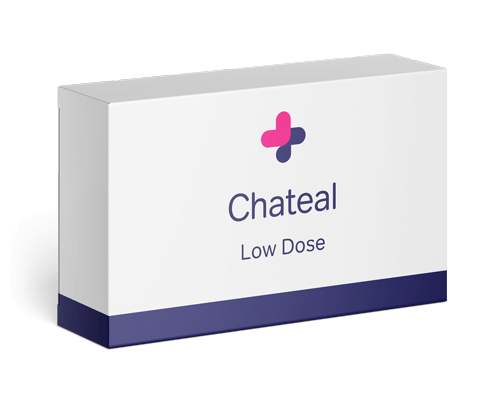Chateal
Low in estrogen but effective in preventing unplanned pregnancies
Chateal is a combination pill with only a small dose of estrogen, making the drug an optimal birth control choice for women who are susceptible to estrogen side effects.
Start your consultation to buy Chateal
Start your consultation to buy Chateal
Buy Chateal from a trusted U.S. Pharmacy

- Fully authorized pharmacy
- Price checked medication
- Free shipping
















Quick and discreet
I ordered Azithromycin tablets for chlamydia treatment, received it next day in a brown discreet pack, and cheaper than all other pharmacies, can't ask for more
Jordan McCann